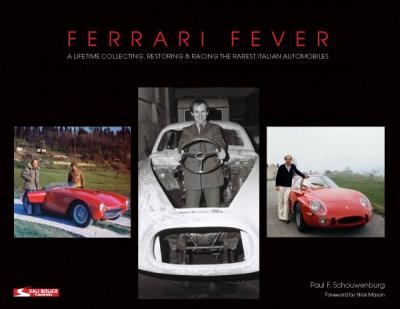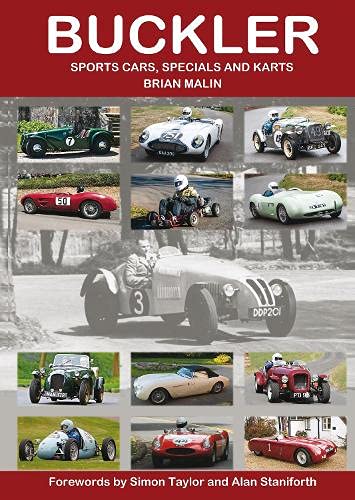
Although they were born 18 years apart, Derek Buckler and Colin Chapman were contemporaries when it came to designing and building ground-breaking sports cars in the late 1940s and early ’50s. They had much in common. Both were innovators, especially in areas of chassis design and improving the handling characteristics of their cars. Both founded successful companies and both died relatively young, Chapman in December, 1982, at the age of 54, and Buckler in 1964 at just 53 years of age. Yet, while Chapman’s Lotus went on to achieve worldwide fame, the name Buckler remains comparatively little known.
Special building was popular in the 1950s, mostly using ‘donor’ chassis from Austin 7 or Ford or simple ‘ladder’ frames but Buckler offered a multi-tubular space frame which was both stronger and lighter and, moreover, available in different models to suit different applications. He was also always ready to adapt his products to his customers’ requirements. In all of this, Buckler’s aim was to provide the impecunious enthusiast with a versatile sporting vehicle which could be used as daily transport during the week and, at weekends, in a wide range of motor sporting events from trials and driving tests to out and out racing. Often, however, the resulting Special would carry a name that concealed the Buckler contribution and a major part of the significance of Malin’s book and the vast amount of painstaking research put into it by its author is that much of that contribution is now revealed.
Buckler also, of course, made a range of complete cars starting with the versatile Mk5 and 6 and going on to encompass DD1 and DD2 with De Dion rear ends and the BB100 with backbone chassis introduced considerably before Lotus’s Elan and their other similarly based models. When karting became popular in the early 1960s, Buckler’s space frame technology found another application for which it was ideal and it became a major player in this burgeoning branch of motor sport. Buckler was also successful with its range of accessories including engine and transmission components and most notably its much admired close-ratio gears.
Brian Malin, the author, first owned a Buckler car in the 1970s and today competes in his Mk 5 in hill climbs and other events. He is an active member of the Buckler Register as well as the British Historic Kart Club and is often to be seen racing or demonstrating his Buckler kart so he is well placed to compile this comprehensive history of all things Buckler. It was first made available in loose-leaf form as long ago as 1990 but this is its first publication as a fully-fledged book, revised, updated and with additional material. Chassis design guru – and Buckler owner – the late Alan Staniforth provided the original foreword and this has been updated and included along with a new foreword by commentator and doyen of motor sport journalists, Simon Taylor.
The fourteen chapters begin with ‘Buckler and the Company’, cover the production and racing cars with some individual histories, the Buckler accessories including one chapter on the badges alone, overseas distribution – New Zealand was a particularly strong market for Buckler – and a fascinating section on the car advertisements before going on to cover the kart story in similar detail. The same number of appendices include reproductions of road tests, articles written by Derek Buckler, specifications of close-ratio gears and Buckler-tuned Ford engines, kart track tests and even one on Buckler letterheads. Malin’s work is truly encyclopaedic and therefore remarkable value for money not just as a reference on the Buckler marque but for its entertaining insight into the world of amateur motor sport of its time. The hundreds of illustrations range from reproductions of high quality contemporary and recent photographs to some admittedly lower quality originals, some of them obviously retouched to improve clarity, whose inclusion is well justified for their essential contribution to the Buckler story.
Brian Malin is to be congratulated for his perseverance in finally bringing to publication a book which is, to all intents and purposes, the full Buckler story.

Bunker Hill is the highest point of downtown Los Angeles, both literally and figuratively. Its circle of life has created a continuous saga of change, each chapter rich with captivating characters, structures, and culture. In Bunker Hill Los Angeles: Essence of Sunshine and Noir, historian Nathan Marsak tells the story of the Hill, from the district’s inception in the mid-19th century to its present day. Once home to wealthy Angelenos living in LA’s “first suburb,” then the epicenter of the city’s shifting demographics and the shadow and vice of an urban underbelly, Bunker Hill survived its attempted erasure and burgeoned as a hub of arts, politics, business, and tourism.
As compelling as the story of the destruction of Bunker Hill is―with all the good intentions and bad results endemic to city politics―it was its people who made the Hill at once desirable and undesirable. Marsak commemorates the poets and writers, artists and activists, little guys and big guys, and of course, the many architects who built and rebuilt the community on the Hill―time after historic time.
Any fan of American architecture will treasure Marsak’s analysis of buildings that have crowned the Hill: the exuberance of Victorian shingle and spindlework, from Mission to Modern, from Queen Anne to Frank Gehry, Bunker Hill has been home to it all, the ever-changing built environment.
With more than 250 photographs―many in color―as well as maps and vintage ephemera to tell his dramatic visual story, Marsak lures us into Bunker Hill Los Angeles and shares its lost world, then guides us to its new one.
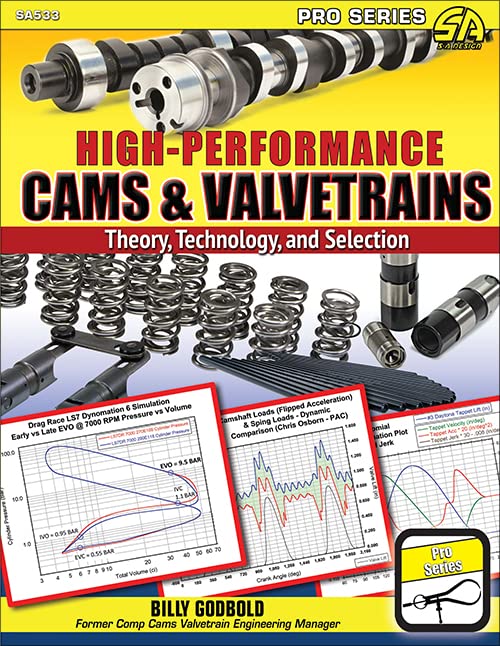
Understand the “magic” of how optimized camshafts extract the most performance from every engine component, eliminating valvetrain guesswork.
Camshafts are the coach and conductor of any four-stroke engine from early flatheads to modern Formula 1. Performance engines are amazingly sensitive to how and when the valves to the combustion chamber open and close. The valvetrain configuration and flow characteristics may change significantly between applications, but the fundamental principles are universal. This allows the language, setup, dynamics, energy, and pressure aspects of a valvetrain to be covered in a way that is just as useful for optimizing a sub-15-hp go-kart engine as it is on a 500-plus-hp street engine or modern 1,500-plus-hp NHRA Pro Stock engine.
In High-Performance Cams and Valvetrains: Theory, Technology, and Selection, farm-kid-turned-physicist Billy Godbold combines his quarter-century of experience with valvetrains at Comp Cams, Lunati, Crane Cams, and Edelbrock with the techniques he uses with professional teams in NASCAR, the NHRA, road racing, dirt-track racing, offshore racing, and land speed racing. He guides you to think about any valvetrain system with his perspective. Often lighthearted and filled with analogies, this book endeavors to make complex concepts easy to understand without watering down important details.
Specific configurations and applications are covered, providing techniques and examples for optimizing camshafts and the valvetrain around intakes, headers, superchargers, turbochargers, fuels, carburetors, and modern EFI applications. If you are planning or building a performance engine, or if you just want to know the science behind how cams and valvetrains work, this book is an indispensable resource.
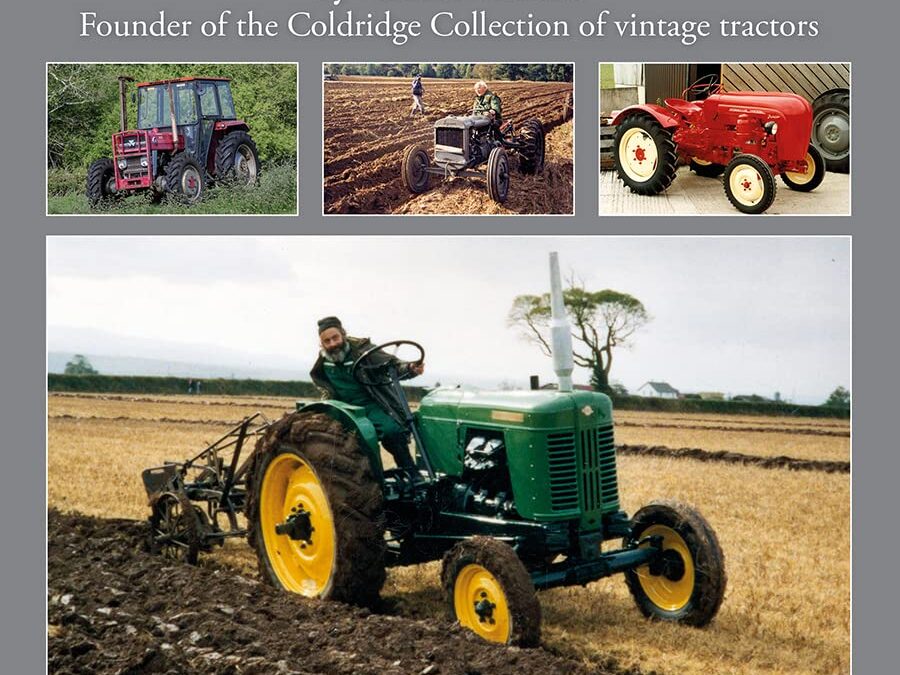
Mike Thorne is a name known to many, many tractor enthusiasts, and particularly those whose primary interest is in Ferguson and Massey Ferguson models, as Mike has assembled an almost unrivaled collection of the tractors of both marques. But before he decided to go down that route, he had been collecting tractors since the 1980s – machines of many makes, models and vintages, some in good order, others wanting substantial work. In his time he has acquired no less than 100 examples, and in this book he takes the reader through them all, with individual entries on every one – though he admits there are some that he has forgotten. So the reader will be treated to observations on a very wide range of tractors, large or small, rare or common, good or less good, with information on where he bought them, on problems, repair and restoration, and on the machines’ characteristics and specifications. Mike designed and constructed two fascinating buildings to house his collection at Coldridge in deepest mid-Devon and these form his museum, which can be visited by appointment and offers enthusiasts a real treat. Telling one man’s story of half a lifetime of rescuing half-dead tractors and collecting live ones, this book, written in an informal style, should capture the attention of anyone who cares about vintage tractors.
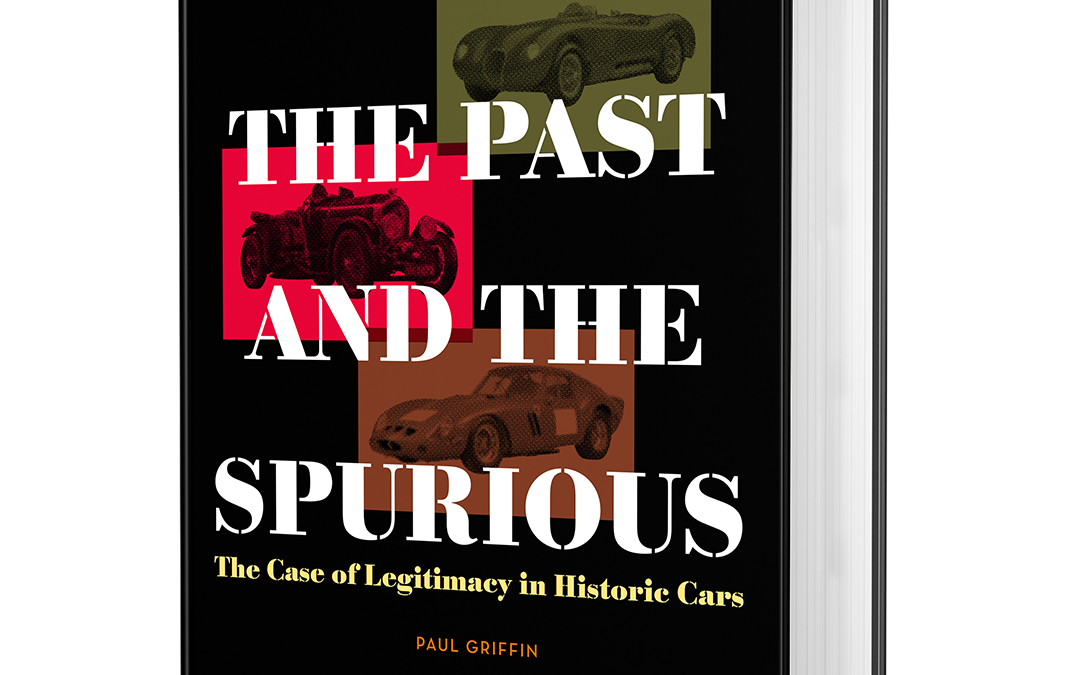
Paul Griffin’s ‘The Past and The Spurious – The Case of Legitimacy in Historic Cars’ marks a new turning in the literature of historic cars. Building on the excellent writings of others over many decades now, this book reviews the evidence and, for the first time, provides answers to the perplexing questions of originality, authenticity and identity which circle around historic cars.
By reference to more than thirty cases and other examples, Paul Griffin unfolds the stories of the cars and characters that have shaped what is today’s thriving historic car sector. He also suggests the reasons why historic cars have become heritage assets having such powerful effects on emotions and passions all over the world.
This is an attractive, high-quality book which tells its stories by reference to images from the world’s leading photographic libraries and automotive art collections.
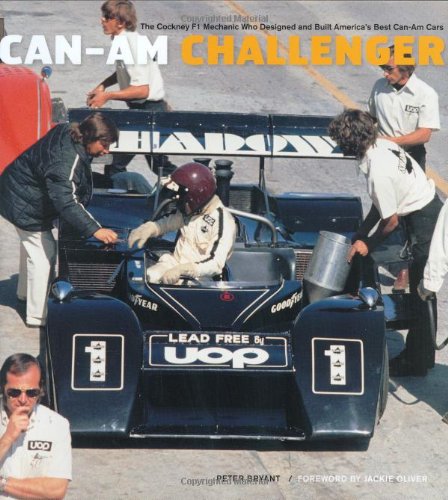
London-born Peter Bryant gave up a career as a front-line Formula One mechanic to begin an entirely new life in American auto racing, where he eventually became a leading Can-Am car designer. His experiences, recounted here in vivid detail, offer a compelling and often very humorous look into one of motor racing’s most exciting eras. Peter fell in love with the United States when he visited to prepare a factory-loaned Ferrari for John Surtees in the 1963 U.S. Road Racing Championship. Peter returned to America as a mechanic for Mickey Thompson’s team at the fateful 1964 Indianapolis 500. This time he stayed, working first with Carroll Shelby’s Cobra team and later with the Dana Chevrolet and Carl Haas Lola Can-Am teams. It was in the Can-Am series that Peter made his mark as the designer and builder of several unique cars. The first was the innovative Autocoast Ti22, which featured the extensive use of titanium components and construction. In 1970 the Ti22 became the first American-made car to lead a Can-Am race since 1968. Peter continued to fight the McLarens and Porsches that dominated the series with his famous UOP Shadow cars in 1971 and 1972, which made pioneering use of ground-effect aerodynamics and ran on unleaded gasoline. In Can-Am Challenger Peter tells his own story in his own engaging style. Though packed with technical details and insights into building a successful race car, his account also includes a wealth of colorful characters and hilarious stories from a life spent behind the scenes with great cars, teams, and drivers.

From the acclaimed author of “Birdmen” comes a revelatory new history of the birth of the automobile, an illuminating and entertaining true tale of invention, competition, and the visionaries, hustlers, and swindlers who came together to transform the world.
In 1900, the Automobile Club of America sponsored the nation s first car show in New York s Madison Square Garden. The event was a spectacular success, attracting seventy exhibitors and nearly fifty thousand visitors. Among the spectators was an obscure would-be automaker named Henry Ford, who walked the floor speaking with designers and engineers, trying to gauge public enthusiasm for what was then a revolutionary invention. His conclusion: the automobile was going to be a fixture in American society, both in the city and on the farm and would make some people very rich. None, he decided, more than he.
“Drive!” is the most complete account to date of the wild early days of the auto age. Lawrence Goldstone tells the fascinating story of how the internal combustion engine, a theory looking for an application, evolved into an innovation that would change history. Debunking many long-held myths along the way, “Drive!” shows that the creation of the automobile was not the work of one man, but very much a global effort. Long before anyone had heard of Henry Ford, men with names like Benz, Peugeot, Renault, and Daimler were building and marketing the world s first cars.
Goldstone breathes life into an extraordinary cast of characters: the inventors and engineers who crafted engines small enough to use on a horseless carriage; the financiers who risked everything for their visions; the first racers daredevils who pushed rickety, untested vehicles to their limits; and such visionary lawyers as George Selden, who fought for and won the first patent for the gasoline-powered automobile. Lurking around every corner is Henry Ford, a brilliant innovator and an even better marketer, a tireless promoter of his products and of himself.
With a narrative as propulsive as its subject, “Drive! “plunges us headlong into a time unlike any in history, when near-manic innovation, competition, and consumerist zeal coalesced to change the way the world moved.

Nestled between Palm Beach’s exclusive boutiques and the lavish lifestyle of Miami’s South Beach rests the charming city of Hollywood, Florida. The charismatic land developer J.W. Young first envisioned this prosperous and well-appointed town in the early twentieth century, and within in a few short decades carved an elegant resort town from a veritable wilderness. Divided into two parts, A Guide to Historic Hollywood by local historian Joan Mickelson, the daughter of a city founder, provides a history of Hollywood’s formative years as well as a guide through the historic streets of this beautiful Florida city. From the roaring twenties to the post-war fifties, Mickelson highlights the buildings, people and events vital to the history of this now thriving coastal landmark. A Guide to Historic Hollywood brings to life Hollywood’s characters and pioneers, which have shaped the city through its long and diverse history.
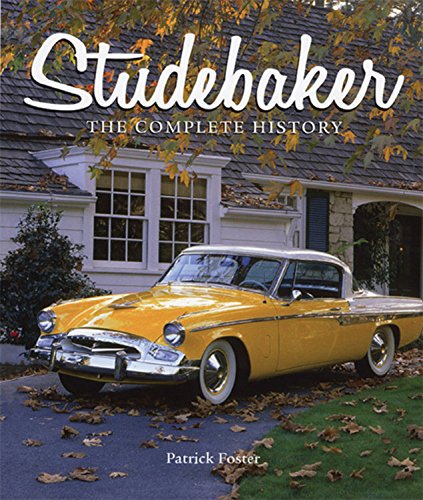
Studebaker began business as a builder of covered wagons. By 1921 they were the number four automaker in the nation. By 1932 they were bankrupt. And for Studebaker, one of the most remarkable stories in American automotive history, that was only the beginning. Studebaker: America’s Most Successful Independent Automaker tells the full and fabulously colorful history of this icon of the American automotive scene. Rife with triumph and tragedy, brilliant moves and boneheaded decisions, Studebaker’s decades of building cars makes for a tempestuous saga featuring some of the more interesting characters in the twentieth-century business world.
But, above all, the story features cars that, for countless Americans, truly defined driving: not just the Champion, which rocketed the company back to the top in 1939, or the 1950s Raymond Lowey-designed Starliner, deemed a “work of art” by the Museum of Modern Art, but also the Hawks and Larks that so many drivers loved. As the book traces Studebaker’s fortunes from success to crisis to merger and back, it also dwells with loving photographic attention on the vehicles, from the first electric car to the last Avanti.

How to Restore Suzuki 2-Stroke Triples is the definitive step-by-step colour illustrated guide to complete restoration, and a must-have restoration guide for both beginners and seasoned Suzuki Triple enthusiasts.
If you can still remember the signature of many 70s motorcycles – the characteristic sound and smell of a 2-cylinder 2-stroke engine – then you’ll find pleasure in the knowledge that many of these classics are still alive and well today, in sheds, garages and barns across the country. Many only make an appearance on a nice, sunny day, perhaps attending classic events or taking an early evening summer ride with friends. Buying one of these motorcycles can be expensive, yet find one in need of just the lightest restoration and you may strike a bargain price.
Restoration is not as difficult as it may at first appear, and benefiting from Ricky Burns’ hands-on knowledge and experience, this step-by-step illustrated guide will give any potential restorer all the advice, tips and shortcuts needed to make an economical, easy restoration happen. This book covers dismantling and rebuilding, sourcing parts, special tools, tackling bodywork, restoring engines and mechanical parts, and much more.

In the late 1960s the Soviet Union was working on a fourth-generation jet fighter concept. These aircraft would form the backbone of Warsaw Pact air forces in the next decade. The Soviet aerospace industry began considering enhancing combat capabilities with new air-to-air missiles and a sophisticated weapons control system. Thus the MiG-29 was born. High maneuverability, a high thrust-to-weight ratio, a wide speed range, and special short-range missiles are just a few of the MiG-29’s special characteristics.
This book extensively covers the concept, variants, upgrades, carrier trials, service, sales, and what the future holds for the MiG-29. Find out how the MiG-29 paved the way for aerodynamic refinements, improved handling, stability, and technological changes that simplified the building process. Learn details on the MiG-29’s engine and controls. Powered by two Klimov NPP (Izotov) RD-33 afterburning turbofans rated at 5,040 kgp (11,111 lb st) at full military power, and armed with an internal gun, short- and medium-range air-to-air missiles, unguided rockets, and free-fall bombs, the MiG-29 is truly a marvel in military aircraft. Authors Yefim Gordon and Peter Davison use over 300 photos to illustrate the story of the MiG-29. Topics covered include design, development, structural detail, international production, trials, comparisons, overseas sales, and much more. This book is a must have for all aircraft enthusiasts!
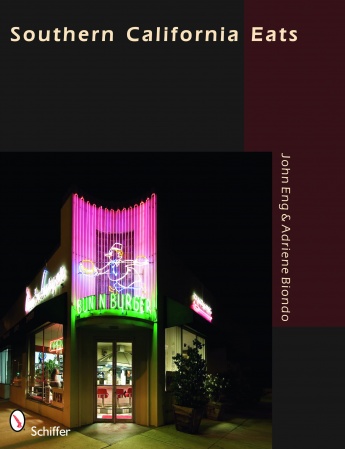
This beautifully photographed book offers a fresh look at Southern California’s roadside eateries. Embark on a road trip to out-of-the-way Route 66 landmarks, futuristic Googie coffee shops, and exotic Polynesian paradises. Part-homage and part-guidebook, this photo essay captures the flavor and character of Southern California’s most unique eating establishments. Tour 1920s legends like Hollywood’s Formosa Cafe to 1960s jet age icons like the LAX Theme Building. Hungry historians, students and pop culture enthusiasts will appreciate the well-researched text, photography, and personal stories. Architects and photographers will enjoy the full-color, visual experience.
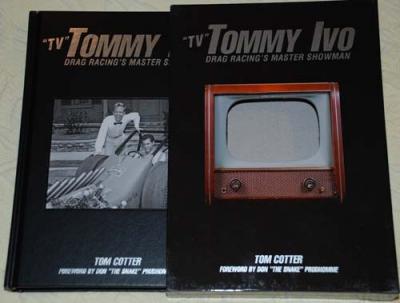
SOLD OUT
“Special Limited edition of 200 very cool TV slipcase books. signed and numbered.
Signed by Tommy Ivo, Don (the Snake) Prudhomme and the author, Tom Cotter.
In the early 1960s, Tommy Ivo had the world in the palm of his hands. Still a young man, he was already a star of television and film with a promising Hollywood future ahead of him. Then his producers told him he had to quit drag racing. He quit the entertainment industry instead.
This is the official story of Ivo’s incredible life and racing career. Readers will follow “TV” Tommy as he becomes the most ambitious drag racer in the nation, building his own cars in the garage behind his Burbank home; becoming the first driver to pilot his dragsters to 170, 175, and 180 miles per hour and towing his cars to match races at small-town drag strips across the United States. Always the showman, Ivo pioneered promotional techniques that are today taken for granted. In this regard especially, his impact on the sport cannot be understated, and his legacy is detailed in this incredible bio of one of drag racing’s most irrepressible characters.
“
Autobooks-Aerobooks 2900 W. Magnolia Blvd. Burbank, CA 91505 (818) 845-0707 Hours: Tuesday-Friday 10:00 AM – 6:00 PM Saturday 10:00 AM – 6:00 PM Closed Sunday and Monday Accept Credit Cards gift cardYES, We have Gift Cards - Click Here AUTOBOOKS IS OPEN...














